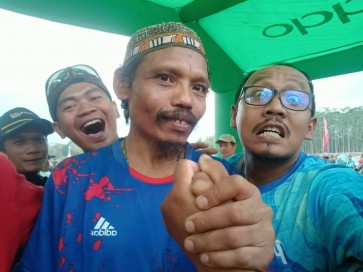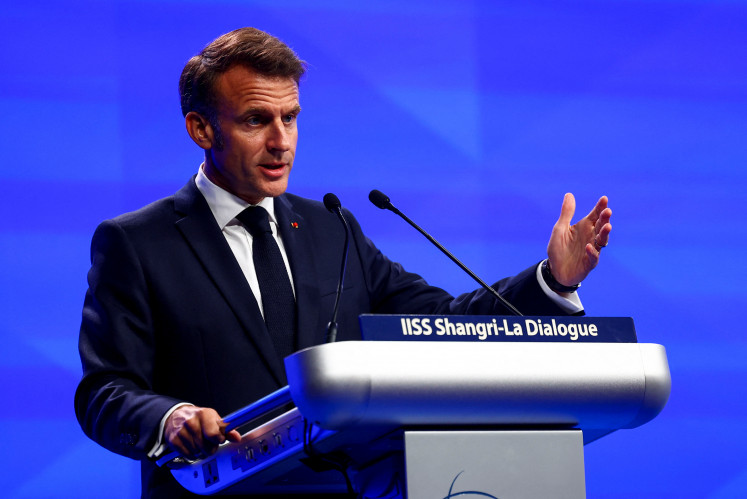Takashi Murakami: Delving behind the smile
Change text size
Gift Premium Articles
to Anyone
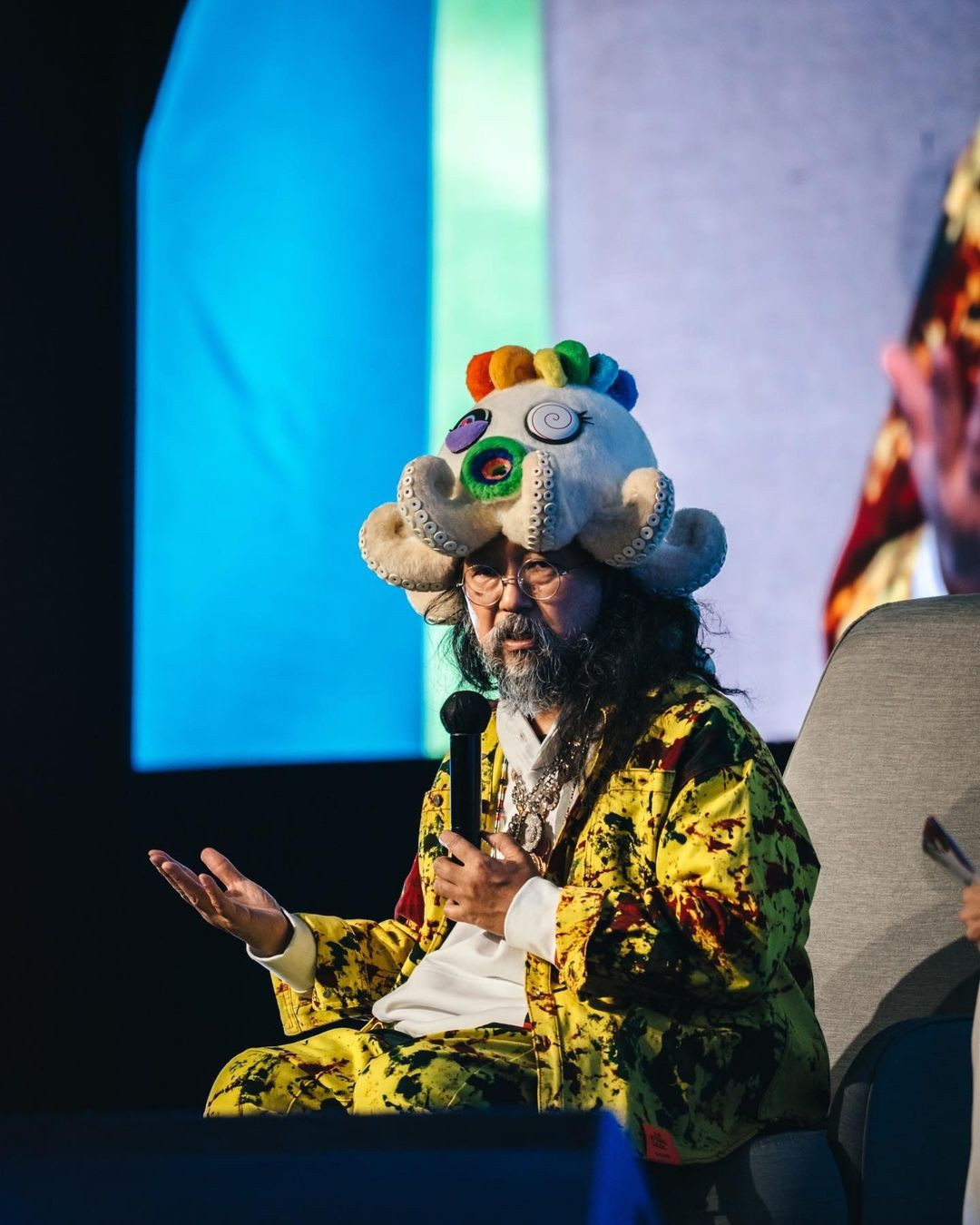
O
n his first-ever visit to Indonesia for IdeaFest 2022, global artist Takashi Murakami from Japan talked about his pursuit of more art, a life of purpose and a peaceful death.
“You always seem happy and cheerful. How do you stay [that way] even though work and life are hard?” singer-songwriter Hiroaki Kato asked Japanese contemporary artist Takashi Murakami while hosting an IdeaFest 2022 “talk show” at the Jakarta Convention Center (JCC) in Senayan.
Last year’s edition of IdeaFest was held in Jakarta from Nov. 24 to 27, with Murakami closing the event as its only featured international speaker.
“Good question,” the 60-year-old replied. “So, every morning, I want to [die by my own hand],” said Murakami, shocking the hundreds of people in the audience at the annual creative industry festival.
“Because art is trouble, and money is trouble,” he continued. “Like, always bankruptcy and bankruptcy!”
The audience broke into laughter. Many seemed to have picked up on the artist’s bleak mood, having been exposed to his funny personality and off-kilter sense of humor during the hour-long discussion. But it seemed Murakami was not joking this time.
“I want to [die by] suicide like the French filmmaker Jean-Luc Godard. He took that [assisted] suicide in Belgium when he was 92 years old,” he claimed.
Media reports at the time, however, said Godard had died at the age of 91 by assisted suicide in Switzerland, where the procedure is legal.
“‘Okay, I can commit suicide in Belgium!’ This is my healthy mental set,” added Murakami, protesting, “No, this is true!” when the audience responded with nervous laughter.
Dig deep
Those aware of the artist’s bubbly personality might have been taken aback by his blunt approach toward his own death, but others who had dived into his work might have understood his cynical worldview.
Although his smiley-face Flowers series is famed across the globe for its unique, colorful design, the meaning behind it is bleak.
“It’s a metaphor for the Japanese losing World War II,” Murakami explained to the audience.
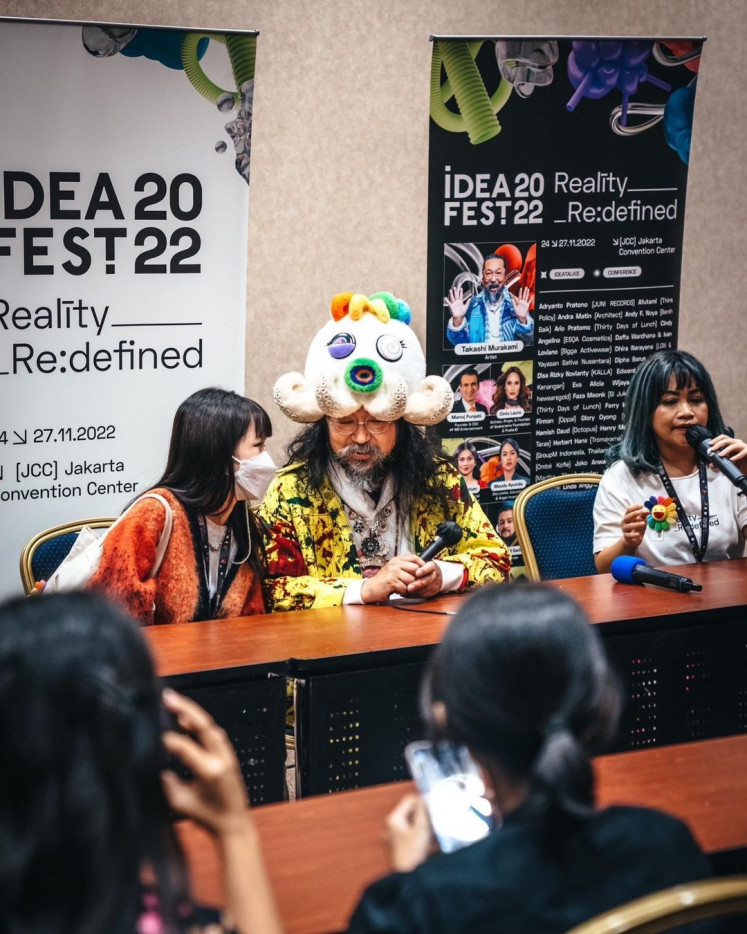
Murakami said the charming, childlike flowers were inspired by the atomic bombs dropped on Hiroshima and Nagasaki in 1945, and that their bright faces represented a nation so traumatized it could not show sorrow.
“Our culture has a big, big trauma about the atomic bomb, [...] the originality sometimes comes from something very negative,” he noted, and that this source of inspiration, albeit grim, was “very important”.
Murakami advised aspiring Indonesian artists to dig deep into their personal stories and share them with the world: “When [you’re from] Indonesia and want to go into the Western art world, you have to explain your background.”
He recalled that he did so extensively in the United States, to the point that he was embarrassed.
“For example, I came from an impoverished family. My dad moved from the countryside to Tokyo and got a job as a taxi driver, [...] but this is a very original and unique story that I have.”
Evolution
Beyond his artwork, Murakami is known for erasing the lines that separate fine and commercial art around the globe, collaborating with well-known labels like Louis Vuitton and Nike, to name just two.
With a joke here and there at the IdeaFest discussion, the highly regarded Japanese artist described his career in a presentation, showing how he rose from being a 26-year-old art student in Tokyo to debuting on Japan’s contemporary art scene at 29.
“Yeah, this is not good,” he chuckled at a slide showing his debut art show, saying it almost left him bankrupt.
He then gestured to photographs of his two most famous sculptures: the sharp-toothed Mr. DOB and the anime-inspired Hiropon. The latter drew the audience’s attention.
“[It was made] with, like, big breasts,” he said as the audience laughed. “Now, young artists cannot make something sexual, but at that moment, in 1995, it was very old-school,” he chuckled.
Since the pandemic, Murakami said he had undergone many artistic transformations, most notably by venturing into non-fungible token (NFT) territory. He then showed his recent NFT project, explaining how hard it was to digitally transform his art.
Host Kato then asked for his thoughts on how NFT and Web 3.0, a decentralized internet on a blockchain network, might change the art world.
Murakami pondered for a second, then replied: “Web 3.0, honestly, I didn’t understand yet.” His closest understanding of it came from his relationship with his eldest son, now 12, who frequently played Fortnite.
“Me and him, every day is a battle. I would go, ‘Please stop playing!’ and he’s like, ‘[Expletive] you, father!’” he shared with a smile.
“His character is powerful for me, but this communication is important [to understand what Fortnite is for young people]. That’s why I thought Web 3.0 is Fortnite.”
Murakami was more open when speaking to The Jakarta Post after the event, as he expounded on his ideas about the current iteration of the internet and technology in general.
“Web 3.0 is [about] sinking the hierarchy, right? Web 2.0 is Google, like [the government] can get your money, and these companies are searching us, stealing our information and still making money.
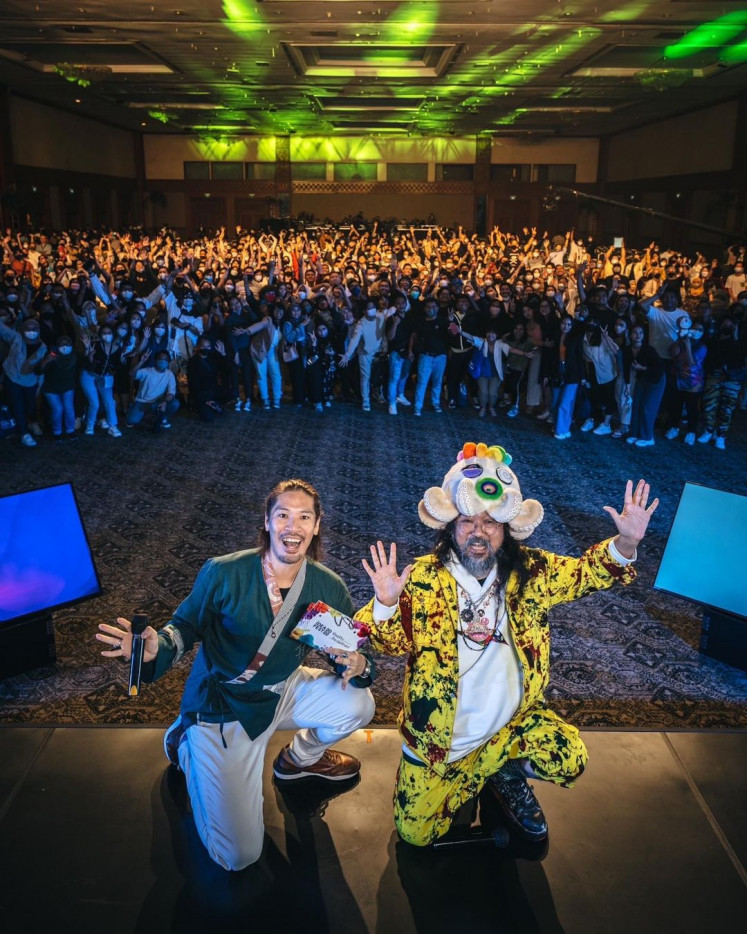
“We use them and it looks like [they’re] free, but they’re taking the information for rich people and then they use it for marketing,” he told the Post.
Web 3.0 felt more revolutionary, as its decentralized nature was “fact”, unlike its predecessor.
“That’s why it’s a transgression [that leads] to the blockchain, with NFT art its most famous thing. So right now, I released the NFT Flowers art, and then [entered a] secondary market to trade with other people, but some percentage gets back to the creator,” he said.
This was “a huge change” from Web 2.0, he added, “It’s a more democratic condition.”
But Murakami still hoped that better blockchain infrastructure for Web 3.0 and forms of NFT were coming soon, so that artists would prosper even more in a year or two.
He also gushed about Machine56, taking out the Indonesian cyberpunk artist’s book 2KO2-2022 and talking about his first-ever meeting with Machine56 that morning.
“[His art] is mixed with animation and sci-fi,” Murakami said. “He is one of my favorite designers.”
Name-dropping from Murakami speaks volumes because of his massive influence on pop culture and art. Many international artists have tapped him for collaborating with them musically, including late rapper Juice WRLD and singer Billie Eilish, and the list is still growing.
Earlier during the discussion, when he was asked about his favorite collaboration with a big-name musician, Murakami thought for a while and then spoke carefully.
“He’s now a very big controversy-maker, his full name is Y-E,” Murakami spelled out, referring to rapper Kanye West.
“He loved the Japanese and the Tokyo fashion scene, and he visited my studio and stayed for three days,” Murakami said, underlining how his collaboration with Ye had impacted him the most.
Ye had gone through the works at his studio, “going, ‘I like that, I don’t like that, this is fresh, this is not fresh,’” he said as the audience laughed.
“This is straightforward communication,” Murakami added, saying he had been grateful for the shared creative process.
Regeneration
If Murakami believes in something than his art, it is the work of younger artists.
Murakami maintains a company in Japan called Kaikai Kiki with 300 employees that has an incubation program for young artists.
“Right now, the Tokyo art scene is pretty broad,” he said. The scene had significant exposure, with many artists coming from his incubation program.
“Ten years ago, I was so depressed because I was losing money, and the young artists are like ‘[Expletive] you,’ to me. No respect!” he said with a laugh.
“But I thought, somebody ought to help the young people, so this is my purpose because when I debuted, the ones who helped me were the fundraising people. The [Rockefeller] Foundation gave me a change,” he said, remembering his early hardships.
“This requires a lot of money. But from a bigger point of view, this is a minimal amount of money.”
Life's purpose
Murakami’s comments about death, perhaps appropriately, came near the end of the Q&A session.
“Maybe that’s one of your philosophies, right? The trauma that you use [in your art]?” Kato interjected, trying to make sense of the artist’s statement.
“Yes, but my trauma is almost wrapped in my smiling every time,” Murakami said, and then urged understanding that behind the smiling face was “a crying and somber face.”
The artist then explained why his smiling flowers, despite their grim origins, were full of childlike wonder: Only children can see beyond a cheerful facade.
“Children, mostly the [young] kids, can find out very easily: ‘Hey, this artist has a sad face, [full of] trauma.’ But adult hides everything, so they can’t see the image,” he elaborated.
But he doesn’t intend to pass beyond the veil anytime soon, as Murakami was extremely busy with work. He also revealed that he wanted to make a feature film and an animated TV series.
An audience member then asked if Murakami ever felt stuck or uninspired, and what he did to overcome that.
“Recently, the stupid TikTok is my inspiration,” he said to uproarious laughter from the audience.
“When I watch TikTok, the stupid [video-sharing] program, in my head I was like, ‘Why is this very popular?’”
But he then realized “that sometimes, people [feel a need] to watch this”.
He had also observed as he grew older that “people want to watch something that makes them smile”, since everything was depressing enough already.
“Young people cannot understand this feeling, but I am 60 years old,” he said, lamenting some aspects of his life and the way he used “stupid costumes”, even if it was just to be funny.
“This is not happy, right? But this is my purpose in society. It’s not necessary [for me] to keep the happiness if I can produce a happy product.”
Clearly moved by his purpose, the audience started to clap, but Murakami cut in: “No clapping,” he said.
“Because this is a true story,” he added, with a smile.


